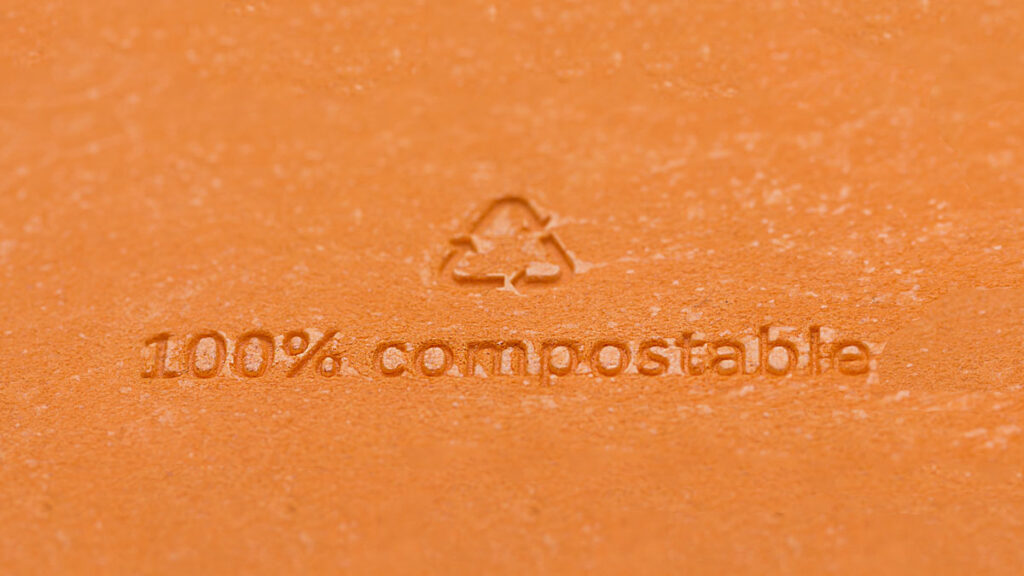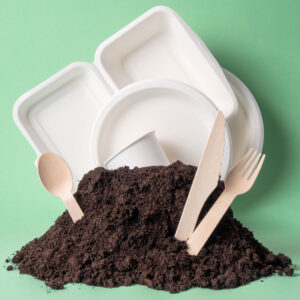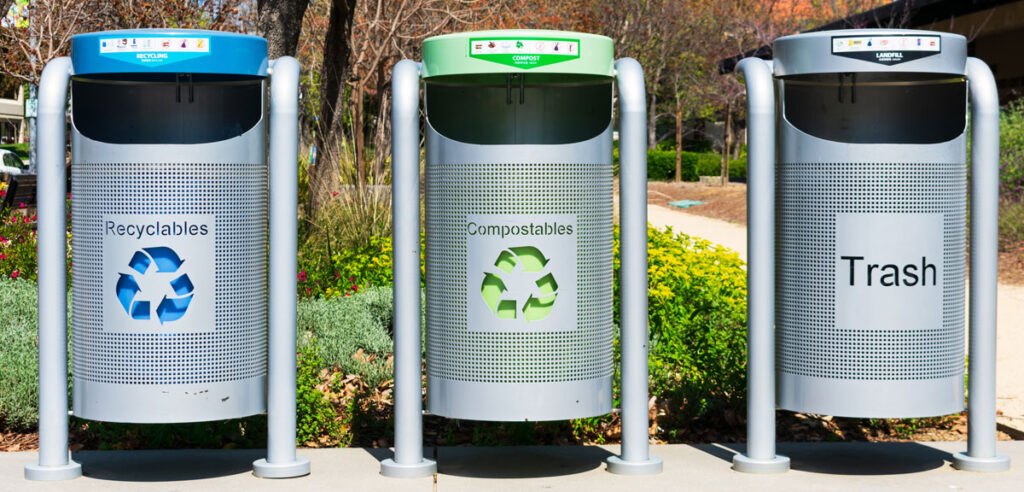10/7
Do compostable plastics contaminate the recycling stream?
Many brands and retailers are making the switch to compostable plastics to end our reliance on products that mostly end up in landfills. This is an exciting development that helps us shift to a more circular economy – one where resources are used again and again, without being thrown away, and compostable plastics have the potential to lead the way. With education, labeling, and supporting infrastructure, compostable products can have a positive impact on the recycling stream while helping address the growing plastic pollution crisis.
What is a compostable plastic?

After a certified compostable plastic product has fulfilled its role, it can be sent to a composting facility in its original form – whether a coffee pod, bowl, trash bag, etc. – and transformed into a valuable soil amendment known as “compost.” It is important to remember that compostable and biodegradable are not synonyms – something we discuss in-depth in an earlier blog post. To be compostable, plastic must break down within a certain timeframe and under specific conditions created in an industrial composting facility, as designated by ASTM and certified by the Biodegradable Products Institute (BPI). This means that compostable plastic is generally incapable of breaking down in a backyard compost pile.
How can compostable plastics help?

The 2018 China ‘National Sword’ Policy impacted our ability to export more contaminated plastics that are not easily recyclable. Often these contaminated plastics end up in landfills or incinerators. While our recycling system faces a number of challenges, compostable plastics, when used in food packaging and food service applications, can help reduce food contamination in the recycling stream. Compostable plastics, along with accompanying food waste, can be taken to industrial composting facilities, where they are turned into healthy, valuable compost. Because compost is rich in organic matter and nutrients, it benefits soil health and the environment through structural amelioration, increased water holding capacity, and greater water infiltration capabilities.
How can we ensure the success of compostable plastics?
The answer lies with proper infrastructure, education, and labeling.
Infrastructure

To ensure compostable plastics are a circular solution, more robust composting infrastructure is needed across the U.S., including expanding the input compost facilities will accept beyond yard waste to include food scraps and certified compostable materials. Many regions of our country lack access to such programs. Investment into composting infrastructure can help all of us dispose of compostable plastics as intended.
Education

Education is the next step to empowering consumers to purchase products that meet their needs, both in use and in the end-of-life process. Many individuals are not aware of the differences in terms that are commonly used, like biodegradable or compostable. Ensuring terms like “compostable” are only used when technically certified, and not as a marketing tool, is an important step. It is also important to understand your local waste management options and to properly dispose of items based on their intended end-of-life destination.
Labeling

Proper labeling is the last piece of the puzzle. Labeling is essential to help consumers, and those managing recycling or composting operations, understand which plastics are compostable, which are recyclable, and which are neither, even if there is no difference in physical appearance. BPI has developed a comprehensive set of guidelines for the labeling and identification of compostable products and packaging. By following these guidelines, companies can help support identification of certified compostable products and packaging. This has the potential to lead to less contamination in both the recycling and composting streams.
With proper investment, education, and labeling, our waste management system and the Americans who use it can make the most of the different sustainable innovations being created every day.
